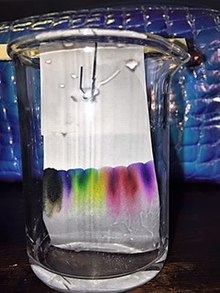Basically, paper chromatography is a versatile Method through which different sorts of compound mixtures of substance could be separated. Here, the term versatile is included in the definition because there are quite a few techniques which may be used to divide a compound substance into its individual elements. Various chemical substances comprise of a variety of individual components. Using chromatograph methods, it is possible to separate these elements based on the requirements of the technician. Fundamentally, separation of chemicals is accomplished by dissolving the mixture in a mobile stage and passing it over a stationary phase. Here, the molecules that interact more strongly with the stationary phase, with which they have higher affinity move gradually through the resin while people which have a weak interaction move through it much faster.

Ultimately, this results From the components within the material being separated. Paper chromatography could be used to analyze or purify molecules of a specific substance. Analytical paper chromatography and Preparative paper chromatography. Preparative paper chromatography is mainly concerned with the isolation and purification of specified molecules within a substance. Analytical paper chromatography differs from preparative Paper Chromatography in the separation of molecules in a material is for the purposes of identifying and measuring the components of the substance. It consequently serves as the ideal method of detecting what happens to a substrate in a chemical reaction or analyzing the existence of a certain substance or element of interest in a particular mixture amongst others. In paper chromatography the stationary phase is obviously hydrophilic in character, meaning it is polar while the mobile phase is non-polar meaning it is hydrophilic.
Sometimes, technicians will use reverse-phase in which the stationary phase is non-polar while the mobile phase is polar. With present advancements in fluorescent protein and artificial flourophore engineering, fluorescent live-cell imaging can also be expected to play an essential part to analyze the localization, assembly and the function of various components in these systems as the secretion system. Consequently, microscopy, and especially fluorescence microscopy can play significant function in paper chromatography in which it can be used to not only observe a variety of components of specified compounds, but also compare these elements during analysis. Generally paper chromatography permits scientists and other technicians to separate and analyze the various elements of given compounds. By applying microscopy methods here, the analysis procedure is further improved given that scientists and tech will be able to compare different samples of those components for greater analysis.


